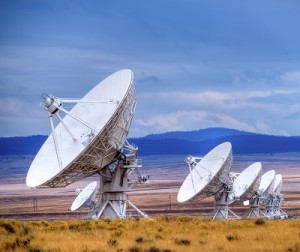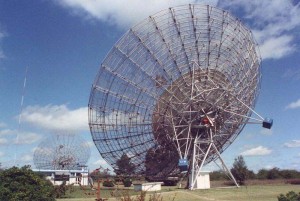
This experiment is for advanced students. Radio astronomy is the study of radio waves originating outside the Earth. The radio range of frequencies or wavelengths is loosely defined by three factors: atmospheric transparency, current technology, and fundamental limitations imposed by quantum noise. Together they yield a boundary between radio and far-infrared astronomy at frequency 1 THz (1 THz =1012 Hz) or wavelength =0.3 mm.
If you’re an advanced high school-age student with a yearning to learn more about radio astronomy, you’re in the right place. First, you’ll get a college-level course about the fundamentals of radio astronomy with a full textbook, and you’ll also find problem sets with solutions and also a final exam.The lab included will have you building your very own radio telescope for under $100. Feel free to build the telescope as you work through the text or straight off the bat. If you’re allergic to math, just skip over those sections to get at the really interesting stuff. Click here to download the full text or use the links below.


Yes, in fact I recommend building the scope first, and when you scratch your head and want to know why it works, you’ll be ready for the course. There’s no point in pushing yourself to learn something you’re not interested in. However if you can work it so that you’re naturally pulled by curiosity to learn more, you’ll not only retain more information but ask way better questions during the process. Have fun!
P.S. I have one of these in my office sitting next to me – and yes, it really works! 🙂
Can I build the radio telescope without doing the course?